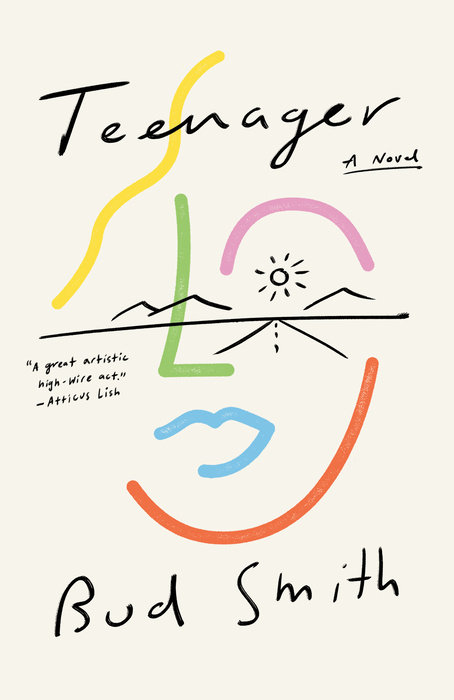
Are we looking for the absolute truth of love or the absolute feeling of it? Or is the question better put: is love whatever best suits our personal needs, or is love ineffable? In Bud Smith’s novel, Teenager, one can imagine it as a light flickering past the darkness in our lives. The main character, Kody, would likely say that he was too dim to comprehend the deep meaning of such things. After all, he is a teenager and can only know what he has already seen and what he imagines. What he has seen is a bleak mixture of foster homes, a hellish high school, juvenile hall, and then Teal. To the world, she was Tella Carticelli, but to him, she was his LIGHT flickering past his darkness. She was his “Teal Cartwheels” and no obstacle or sense of reality could keep him from her. Or her from him.
Meeting Teal was Kody’s daydream brought to life. And he had many daydreams. Detached from reality, their romance was like J.D. and Veronica’s in the 1989 film, Heathers. He is Teal’s outsider ready to rescue her from the high school group-think that they both detest and her disturbing home life. His ever erratic and racing mind brings him to a myriad of absurd ideas of what to do to solve their problems. In one fleeting moment, he lets the thought of a bomb-threat drop, and the wrong ears hear it landing him in juvenile hall. Stuck between bars he finds that he has gotten his “Teal Cartwheels” pregnant. He then learns of her parents’ plan to ship her away to Italy, in a threatening letter that her father had sent to him. To add effect, the father made sure to note that he had a gun. Kody is lovesick and determined that he can still overcome this and they could be a family. He busts out of juvie, rescues Teal, and embarks on a wild ride where reality has no meaning. Franz Kafka could not have set the stage better than Bud Smith for the whimsical journey that these star-crossed lovers traverse. The two lovers leaned forward into the long roads of an idyllic America, leaving nothing behind them except the sad skies of New Jersey. They just could never have predicted the hilariously bizarre and fanciful events that would come next. Impulsive and excited teenagers rarely do.
Stolen cars.
Graceland.
A pissed-off brother.
Montana.
Guns.
Dead Bob.
A boatman.
Swiss Family Robinson.
The combination of such unrelated and beguiling things seems like they couldn’t even fit into a series, let alone one novel. But the absurd and darkly humorous experiences are the beauty of Teenager. At that odd age between childhood and adulthood, your mind races and your body attempts to follow. Big ideas seem possible. What you see on TV feels real. And the immediate sensation that your body feels when you say you love someone feels timeless. Kody is under no false impression that he can be on the run with Teal forever. Sure, he thinks being a cowboy is possible, and attempting to build a family with her at such a young age is realistic. But at all times he is ready to face death. He imagines going out in a blaze of glory. Perhaps a duel between him and Teal’s brother who apparently has been tracking them the entire time. Or maybe the police will finally catch up to him and his life would end in a glorious shootout. It doesn’t matter. He is ready for all of it like its fate and that he deserves it. So, he lives it up while he can. Not for himself, but for Teal, the love of his life. The person he would do anything for. Literally, anything. So, they do it all. They zigzag across the country, chasing every dream they could remember having and have the time of their lives doing it. Nothing is too big or too small for a teenager. And no reality can hold them down.
This novel is the wayward fantasy that most adults have lost. Where we see danger, they see adventure. What we see as red flags, they see as quirkiness. Darkness does not exist for them once they are free of the adults in their lives. Only a whimsical sense of self-determination. We have felt this. Bud Smith has felt this. And now that he has written this nostalgic love letter to our youth, we can feel it again.
***
Teenager
by Bud Smith
Vintage; 400 p.
Mallory Smart is a Chicago-based writer and is the Editor-in-Chief of the publishing house, Maudlin House. She also talks about music and literature on the podcast, Textual Healing. Her novel, The Only Living Girl In Chicago, came out from Trident Press in August 2021.
Follow Vol. 1 Brooklyn on Twitter, Facebook, and sign up for our mailing list.
